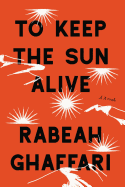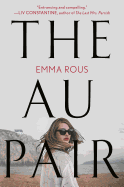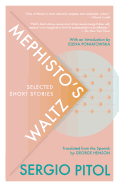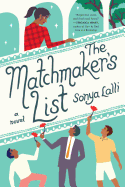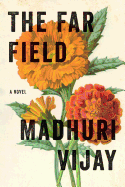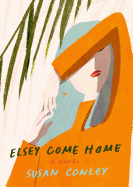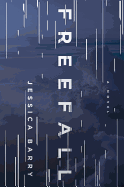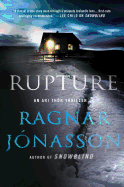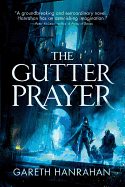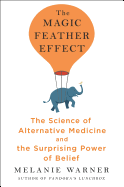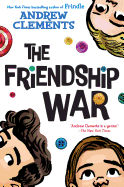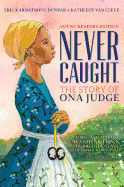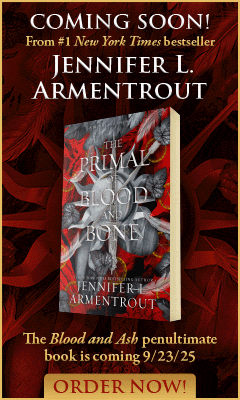Week of Friday, January 25, 2019
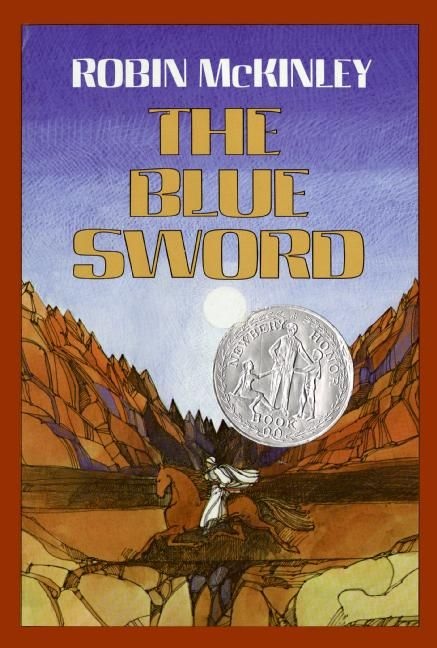 I grew up reading books with strong female protagonists, books such as Catherine, Called Birdy by Karen Cushman (Clarion, $7.99) and The Blue Sword by Robin McKinley (Puffin, $8.99). So it's always surprising and a little dispiriting to me when a parent or grandparent at the bookstore asks for recommendations for a boy with the proviso that "he doesn't like reading about girls." At least half of the books I intended to hand them are immediately out of the running, including a number of classics. The reverse--girls who will only read books about girls--comes up much less frequently, in my experience.
I grew up reading books with strong female protagonists, books such as Catherine, Called Birdy by Karen Cushman (Clarion, $7.99) and The Blue Sword by Robin McKinley (Puffin, $8.99). So it's always surprising and a little dispiriting to me when a parent or grandparent at the bookstore asks for recommendations for a boy with the proviso that "he doesn't like reading about girls." At least half of the books I intended to hand them are immediately out of the running, including a number of classics. The reverse--girls who will only read books about girls--comes up much less frequently, in my experience.
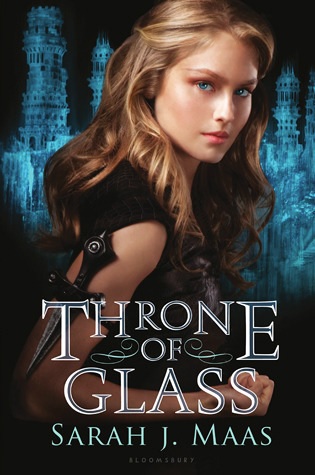 For all the older relatives who tell me their boys want books about boys, this rarely seems to be a problem when I'm recommending books directly to the child. It doesn't hurt that we live in a golden age of badass women, from Sarah J. Maas's more traditionally deadly women in the Throne of Glass (Bloomsbury, $11.99) series to the brave protagonist of Angie Thomas's The Hate U Give (Balzer & Bray, $18.99). I think it's easy to forget how open-minded children can be, given the opportunity. They want escapism--they want to be put in other kids' shoes.
For all the older relatives who tell me their boys want books about boys, this rarely seems to be a problem when I'm recommending books directly to the child. It doesn't hurt that we live in a golden age of badass women, from Sarah J. Maas's more traditionally deadly women in the Throne of Glass (Bloomsbury, $11.99) series to the brave protagonist of Angie Thomas's The Hate U Give (Balzer & Bray, $18.99). I think it's easy to forget how open-minded children can be, given the opportunity. They want escapism--they want to be put in other kids' shoes.
 One of my most consistently successful recommendations for children of any age or gender is the comic book series Lumberjanes (Boom Box, $14.99). The feminist twist inherent in the title might alert some parents, but the fictional camp for "Hardcore Lady Types" is never anything approaching preachy. It's hilarious and fun, drawing on the universal desire to see a bunch of kids battle supernatural creatures with clever quips at the ready. Underneath these surface pleasures, Lumberjanes is remarkably perceptive about young people's doubts and insecurities, and far more engaging than anything involving, for example, a boy super-spy.
One of my most consistently successful recommendations for children of any age or gender is the comic book series Lumberjanes (Boom Box, $14.99). The feminist twist inherent in the title might alert some parents, but the fictional camp for "Hardcore Lady Types" is never anything approaching preachy. It's hilarious and fun, drawing on the universal desire to see a bunch of kids battle supernatural creatures with clever quips at the ready. Underneath these surface pleasures, Lumberjanes is remarkably perceptive about young people's doubts and insecurities, and far more engaging than anything involving, for example, a boy super-spy.
My advice is not to ignore young boys' reading preferences, but to make sure not to underestimate their curiosity and empathy. --Hank Stephenson, bookseller, Flyleaf Books, Chapel Hill, N.C.
To Keep the Sun Alive
by Rabeah Ghaffari
Filmmaker Rabeah Ghaffari's debut novel, To Keep the Sun Alive, is a story of grand scale told with humility, precision and vivid sensory detail. It centers on a family that maintains a fruit orchard amid the ruins of the provincial Iranian town of Naishapur--the once-great intellectual center of the Islamic world that has since been leveled by centuries of war and conquest. Like the landscape they inhabit, Ghaffari's characters are representative of a time quickly fading from memory: they cook elaborate meals, dine slowly with their friends, take siestas in the afternoon sun, bring bread to their neighbors and remain just as attuned to pagan tradition as they are to Islamic tradition. But as the Iranian Revolution occurs, this family experiences profound changes to their way of life, and are taken down divergent paths.
Although To Keep the Sun Alive is a domestic novel deeply concerned with the intimacy and comforts of home, Ghaffari doesn't stray from exploring the political implications of domesticity. She presents her readers with a kaleidoscopic view of Iranian culture that situates the Islamic Revolution as a particular moment in history that, in many ways, is at odds with Islamic intellectual tradition. Ghaffari's characters share parables and carry out impassioned debates that help readers understand the tensions between the competing ideologies of the cultural moment, and what precisely is at stake for the Iranian people in the revolution. This is a rich, evocative and thoroughly impressive first novel. --Emma Levy, bookseller at Third Place Books Seward Park, Seattle, Wash.
Discover: In Rabeah Ghaffari's impressive debut, a family negotiates the new religious and political atmosphere brought by the Iranian Revolution.
The Au Pair
by Emma Rous
In The Au Pair, Emma Rous presents readers with a thorny tale of twisted relationships and their lasting ramifications. Seraphine and her twin brother, Danny, have just lost their father. While going through his papers, they discover a photograph that neither of them has ever seen before--a photo that was taken shortly after their birth and only hours before their mother's tragic suicide. It shows their smiling parents and one baby. Unsettled, Seraphine begins to dig into her family's troubled past and discovers that the only person left who can provide any answers is the mysterious au pair, Laura, who fled in disgrace the day Seraphine was born.
Emma Rous's engrossing debut novel is delightfully lurid and evocative. Full of twists, turns and red herrings, the mystery is satisfyingly complex with a nice touch of romance on the side. The setting, an estate and village on the coast of England, adds color and atmosphere, while the alternating narrators--Seraphine in the present and Laura in the past--inject the story with an exciting sense of urgency. At times, Seraphine herself recedes to the background as her imperious grandmother Vera steals the show. The Au Pair is a juicy and compelling read, by a promising new author. --Judie Evans, librarian
Discover: This debut is a sensational gothic mystery about tangled families and mistaken identities.
Mephisto's Waltz
by Sergio Pitol, transl. by George Henson
The 13 short stories in Mexican author Sergio Pitol's Mephisto's Waltz share a common thread. They posit stories within stories, narrators upon narrators, until the reader is contending not just with a tale, but an almost-Brechtian structure that reveals the various modes of communicating that tale in the first place. Never content simply to tell a story, Pitol's works instead break down the reasons how, and why, stories are told.
"Mephisto's Waltz," Pitol's purported favorite of the collection, is the best example of this layered storytelling. In it, a woman reads a recently published piece of fiction by her estranged husband, which is in and of itself about a writer who is thinking up a story. Pitol deftly weaves in and out of the different narrative layers, showing the woman's reactions to her husband's work as the story moves through it, giving the reader multiple texts at once to see and respond to.
As noted in the final piece, "The Dark Twin," many of the stories have clear hints of autobiography. Nearly every piece involves a Mexican living in Europe, mirroring Pitol's own travels (each story notes the city of its creation, none of which are outside Europe). And more often than not the narrators are intellectuals or writers, knowledgeable of stories and cultures. However, for every hint of truth there is a moment where the artifice of fiction is laid bare. Framing devices, false stories and more dot the pages of Mephisto's Waltz, always forcing the reader to confront the structures of fiction. --Noah Cruickshank, adult engagement manager, the Field Museum, Chicago, Ill.
Discover: The stories in Sergio Pitol's Mephisto's Waltz break the fourth wall to explore how and why we tell tales.
The Matchmaker's List
by Sonya Lalli
In her mid-20s, Raina Anand agreed to let her Indian grandmother play matchmaker if she was still single at 30. But when her 29th birthday hits, Raina gives in and starts meeting the guys on Nani's list. Secretly, she figures a few blind dates will get Nani (and Toronto's female Indian community) off her back while she helps plan her best friend Shay's elaborate wedding and waits for her ex to come to his senses. But even half-hearted dating while dealing with clashing cultural expectations isn't easy. Sonya Lalli traces Raina's fraught, often hilarious romantic journey in her debut novel, The Matchmaker's List.
Born to a mostly absent teenage mother and raised by her grandparents, Raina has always been the dutiful granddaughter. As she works through Nani's list, though, she grows increasingly frustrated with the pressure to marry a nice Indian guy. While Raina's dating mishaps will ring true for readers who have faced the challenges of 21st-century singlehood, her passivity is frustrating at times, and her absorption in her own troubles sometimes makes her blind to others' struggles. Lalli's narrative does eventually lead Raina toward true love, but the book's most satisfying relationships are between heterosexual women: Raina's deep bond with Shay, her fierce love for Nani and Nani's own volatile friendship with Shay's mother. As Shay's wedding approaches and Raina starts to run out of names, she learns to own her mistakes and admit what she really wants in a partner--and what she must provide for herself. --Katie Noah Gibson, blogger at Cakes, Tea and Dreams
Discover: Sonya Lalli's warm, witty debut novel explores the challenges of modern dating in Toronto's Indian community.
The Far Field
by Madhuri Vijay
The wistful narrator of Madhuri Vijay's remarkably vivid debut, The Far Field, is Shalini, a young woman from an educated, industrious family living in South India. Growing up as an only child, Shalini's relationship with her mercurial mother was all-consuming, with the two spending much of their days together. This intensely private mother-daughter connection is shattered when a handsome, charming traveling salesman from Kashmir, Bashir Ahmed, disrupts their insular lives.
Now entering her 30s, the daughter recounts her mother's life-changing friendship with Bashir Ahmed and Shalini's subsequent journey to Kashmir to track him down after her mother's death. She travels from her father's house in the modern city of Bangalore to the rough and mountainous north. In Bashir Ahmed's village, our narrator becomes caught in a deadly power struggle between villagers and the occupying army. Her devastating story reveals itself in the form of a confessional, an admission of guilt by omission over her role in the Indian military's capture of Bashir Ahmed's innocent son, Riyaz.
Vijay's descriptive powers and eloquent prose work brilliantly in awakening the reader to the majestic beauty of Kashmir and the severe hardships of villagers who make their home in its verdant landscape. Vijay's writing is socially astute, exploring taboos of mental illness, female sexuality and religious indifference. It is also politically relevant, a reminder that beautiful but war-torn Kashmir is still a disputed territory, fought over for decades by India and Pakistan. --Shahina Piyarali, writer and reviewer
Discover: A sexually fearless, emotionally lost young woman travels from Bangalore to Kashmir to track down a mysterious friend of her mother.
Elsey Come Home
by Susan Conley
The eponymous narrator of Susan Conley's novel Elsey Come Home is a woman caught between choices: to drink or not to drink; to dwell on her past or look toward her future; to stay in her marriage or to leave it. The central tension of Elsey's life, however, is the impossible choice between being an artist and being a mother.
Elsey is an American woman living in Beijing with her husband, Lukas, and their two young daughters. Once a successful painter, Elsey now has a life quietly dominated by her drinking problem, her unresolved grief over the childhood loss of her younger sister and her avoidance of Lukas's attempts to fix their marriage. Unable to paint or to mother consistently, she feels a terrible "unrest" in her life, especially when comparing herself to others in her community of affluent expats.
Conley organizes the novel around her character's time at a weeklong mountain retreat with an unlikely group of strangers, and readers are meant to understand that this is the experience that will, in a roundabout way, lead to Elsey's salvation (just as Elsey herself hopes it will). But the story is most interesting when it strays beyond this plot: when Elsey reflects on her childhood in Maine; her lush descriptions of what it was like to be fully immersed in her artwork, and then in her drinking; the end of the novel, after the retreat, when Elsey impulsively takes her daughters to the U.S. Her thoughtful, vulnerable, honest articulation of her pain--told from a distant future vantage point--is what truly drives her story toward resolution. --Hannah Calkins, writer and editor in Washington, D.C.
Discover: An American painter in Beijing struggles to resolve questions of identity, motherhood and addiction in this well-paced, quietly moving novel.
Mystery & Thriller
Freefall
by Jessica Barry
A woman opens her eyes at the start of Jessica Barry's Freefall and realizes she's just survived a plane crash in the Rockies. One might expect her immediately to find a way to signal or call for help, but the woman, Allison, does not. Instead, she smashes her phone. It soon becomes clear she's being pursued by someone with deadly intentions, and the last thing she wants is to be tracked or found. Though injured and lacking food and supplies, Allison sets out to get off the mountain and save herself.
Back in Maine, Allison's mother, Maggie, has received the worst news of her life. Her daughter was on a plane that crashed, and while Allison's body hasn't been recovered, no one could've survived. The pilot is dead, and the press is reporting that Allison is, too. But Maggie hangs on to hope, and after she digs more into the crash and the reason her daughter was on the plane, Maggie believes her hunch is correct. So why hasn't Allison contacted her--or anyone--to say she survived?
As Freefall alternates between the two women's points of view, and between the past and the present, it combines Allison's suspenseful fight for survival with a mother's faith in her daughter, something that refuses to be extinguished even when situations turn dire. Pacing is fast, and Allison is resourceful without turning into a superhero in this riveting thriller. --Elyse Dinh-McCrillis, blogger at Pop Culture Nerd
Discover: After a woman survives a plane crash, she and her mother must stop the people who want the younger woman dead.
Rupture
by Ragnar Jónasson, transl. by Quentin Bates
A man discovers there was an unwelcome guest in his apartment; not wanting to worry his live-in girlfriend, who is mired in a custody battle with her ex, he keeps this from her. Another man, the recovering-addict son of a retired politician, dies in what may be a deliberate hit-and-run. A teacher asks cop Ari Thór Arason, who works in northern Iceland's sleepy Siglufjördur, to look into the 1957 death of his aunt, which was written off as an accidental self-poisoning. The teacher believes that finding out the truth hinges on learning the identity of a mysterious young man in an old family photo. Meanwhile, Ari Thór strikes up a reciprocal working relationship with Ísrún, an award-winning TV journalist from Reykjavík who is covering the deadly flu that has put Siglufjördur into quarantine.
While these swirling plotlines may seem disparate, fans of the Ari Thór series, which began with Snowblind, know that they can depend on Ragnar Jónasson to tie everything up in a beautiful Agatha Christie-esque bow. Ari Thór is no Hercule Poirot--he'd be the first to admit that he lacks even a scintilla of the Belgian detective's social graces--but Rupture concludes with a delectable, almost campily drawn-out Poirotian summarization. Although it's not at all necessary to have read any of the three previous books in the series to appreciate Rupture, some foreknowledge of Ísrún's medical history and of Ari Thór's rocky romantic past with Kristín makes the emotional stakes that much higher this go-round. --Nell Beram, author and freelance writer
Discover: The fourth thriller in the reliably clever Ari Thór series is preoccupied with searches for mysterious and missing males.
Science Fiction & Fantasy
The Gutter Prayer
by Gareth Hanrahan
Set in a densely detailed fantasy city, Gareth Hanrahan's debut novel, The Gutter Prayer, pits thieves and saints against gods and monsters in an epic battle of both might and wits.
In the ancient city of Guerdon, built upon layer after layer of its own past, three thieves fall headfirst into an ancient war. Carillon Thay, who just wants to get out of the city, finds her life upended when she begins having hyper-realistic visions of a long-buried evil. Her friend Spar from the Brotherhood of Thieves struggles to maintain his humanity in the face of a disease that kills through slow calcification. Rounding out the group is Rat, a ghoul who feeds on corpses like the rest of his kind but chooses to live among humans rather than in the ghoul tunnels far below the streets. Following a burglary gone awry, the trio incurs the wrath of Thieves and thief-takers, but they have even bigger problems. Cari's visions mark her as a saint, but the gods who claim her have an agenda that will bathe Guerdon in blood unless she and her friends can stop them.
Hanrahan digs into fantasy tropes with relish but creates the scares himself, including the eerie Tallowmen, living humans molded into wax monstrosities. Snappy banter and surprise touches like a foul-mouthed, aging warrior saint and a secret subway run by worm monsters add buoyancy to a world of hungry gods and opportunistic humans. Genre fans will love this dark fantasy with Discworld-style sensibilities, the first in a projected series. --Jaclyn Fulwood, blogger at Infinite Reads
Discover: In this epic series opener, three young thieves get caught up in a battle between gods in a city steeped in history and blood.
Science
The Magic Feather Effect: The Science of Alternative Medicine and the Surprising Power of Belief
by Melanie Warner
"Proponents of [alternative] therapies all have their theories about how they work," writes Melanie Warner in The Magic Feather Effect: The Science of Alternative Medicine and the Surprising Power of Belief, "and for this book I will spend time hearing them." The open-minded Warner (Pandora's Lunchbox) more than makes good on that promise. Her research takes her to the offices of self-proclaimed energy healers, to acupuncturists and chiropractors, and to some of the most prestigious research clinics in the United States to discover what effects, if any, alternative medicine has on the human healing process.
What she discovers is illuminating: many patients of alternative medicine have found relief; some have even found cures, but not necessarily for the reasons they think. Warner uncovers the power of the so-called "placebo effect," which is rooted in the power of belief: if a patient believes she'll get better, she does, at least temporarily. Warner shows that the placebo effect arises, in part, from the brain's complex interpretation of pain. The section on how an injured soldier's response to pain changes once he leaves a battle zone for a hospital is especially enlightening.
Warner displays a genuine curiosity and sensitivity throughout and gives space to many alternative medicine practitioners to argue that their approaches are effective for reasons beyond the placebo effect. Compelling, thoughtful and great fun to read, The Magic Feather Effect reveals that perhaps there's much more to our self-healing systems than even some licensed medical professionals realize. --Amy Brady, freelance writer and editor
Discover: This entertaining deep dive into the world of alternative medicine reveals that the placebo effect might be more powerful than many people realize.
Children's & Young Adult
Hands Up!
by Breanna J. McDaniel, illus. by Shane W. Evans
"Greet the sun, bold and bright! Tiny hands up!" In star-studded sleeves, two raised brown arms exuberantly face the golden, warming rays, ready to start a new day filled with discovery, growth and, of course, much fun. Mommy and Daddy join the radiant welcome, their hands up to play peek-a-boo. As the morning progresses, the girl's hands (and arms) go up to get dressed, then to reach for orange juice, the kitchen faucet, her piled-high hair. At school, hands go up for her turn, to grab a high-shelf library book. In ballet class, hands go up in fifth position and up again later for no-hands biking antics. Her hands go up to accept help, to "praise and worship," to assist her team in winning the basketball trophy. Finally, her hands are among the many raised high to hold protest signs, working together toward a better world.
Author/children's literature scholar Breanna J. McDaniel’s picture book debut creates exuberant elation from a phrase too long associated with "anger, sadness, frustration, and fear." Inspired by her niece, McDaniel worries "that this world is not a place where [she] can show her joy, her intelligence and the strength of her will without being seen as a social problem, all because she's black and a girl." Hands Up! is McDaniel's fundamental message that "black kids are just that--kids"--and all children "deserve to thrive." Author/illustrator Shane W. Evans (with 30-plus titles) brings McDaniel's humanizing expectations to every vibrant, textured page: "I realized every line and color was an important mark toward raising the hands of people throughout the world." He adds, "I stopped being afraid of raising my hands up, and stretching them high felt right." Sobering and celebratory both, writer and artist triumphantly assure all audiences, especially young black readers, "You matter." --Terry Hong, Smithsonian BookDragon
Discover: Breanna McDaniel's exuberant picture book, Hands Up!, is a joyous celebration of cooperative participation and boisterous fun.
The Friendship War
by Andrew Clements
"If Ellie Emerson is my best friend, then how come she gets me so upset?" Grace and Ellie have been best friends since second grade and Grace has always played the sidekick. But sixth grade brings abrupt change when Ellie accidentally kicks off school's hottest new fad: buttons. On a summer trip to visit her grandfather in Massachusetts, Grace explores an old mill that Grampa recently bought. There, she finds a treasure trove of 27 boxes, each filled with buttons of varying sizes, colors and shapes. After Grace brings a sampling of them to school for show-and-tell, her classmates catch "button fever," kicking off a wave of collecting and trading. Unsurprisingly, Ellie hates not being in the spotlight and Grace's new popularity puts the pair at odds--if Grace can't find a way to make peace, their friendship could be doomed.
The Friendship War by Andrew Clements (Frindle, The Loser's Club) is a fun, unconventional take on childhood fads. The button craze is reminiscent of countless trends, but choosing an everyday, ordinary object as the focal point gives Clements's novel a classic feel. Grace is endearing and lovable, her odd obsession with collecting things a mystery even to her. And though The Friendship War is told entirely from Grace's perspective, Clements's portrayal of Ellie is thoughtful and nuanced, her self-centeredness and borderline bullying personality contrasted with moments of vulnerability and bubbly charm. The Friendship War is a thoughtful, playful look at the complexities of trends and friendships. --Kyla Paterno, former YA and children's book buyer
Discover: After accidentally starting the biggest trend in school, Grace finds herself at odds with her best friend Ellie.
Never Caught, the Story of Ona Judge
by Erica Armstrong Dunbar and Kathleen Van Cleve
Never Caught, the Story of Ona Judge is an expertly crafted young readers edition of Erica Armstrong Dunbar and Kathleen Van Cleve's 2017 National Book Award Nonfiction finalist, Never Caught.
Ona Maria Judge had been a "slave since birth," always wondering and worrying whether her masters thought her "quiet enough or helpful enough or invisible enough." On Saturday, May 21, 1796, this changed. While George and Martha Washington ate dinner, Ona slipped out of the Washingtons' plantation home and made her way down to the docks, where she boarded the Nancy. Dunbar and Van Cleve give this moment--and all of Ona's trials--a feeling of immediacy, vividly imagining the 23-year-old woman's feelings: "Fear of... being a slave for the remainder of her life must make her feel like she is wearing a blanket of fire around her neck."
This story is made accessible to a young audience by including a thorough timeline, text from Ona's 1845 interview with the Granite Freeman, and clear, direct language that remains candid throughout. The authors use the country's growth as a point of reference: Ona grew up "with a front row seat to not only the literal battlegrounds of the Revolutionary War, but also the battle of ideas sparked by the formation of a brand-new country." It's a story of hardship and brutality--the Washingtons never stopped looking for Ona; she never achieved a "happily ever after"--but it's also an intriguing tale of perseverance. And, "like America itself, Ona [risked] everything so that she, too, could achieve those rights written in the Declaration of Independence: life, liberty, and the pursuit of happiness." --Siân Gaetano, children's and YA editor, Shelf Awareness
Discover: This young reader's edition of Dunbar and Van Cleve's 2017 NBA finalist Never Caught is an engaging read that trusts child readers to face hard realities and come to their own conclusions.
| Advertisement The Primal of Death Must Be Defeated |


